
Superfine Turbine (1973)
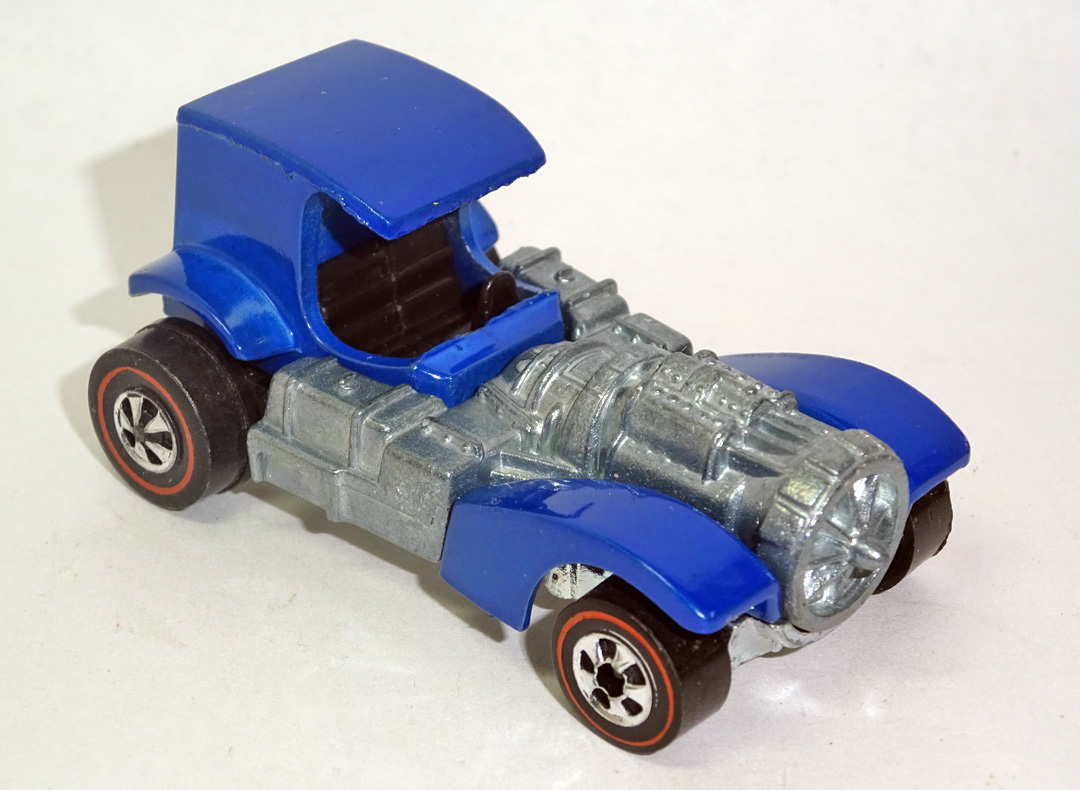
The Superfine Turbine, designed by Larry Wood, is one of three castings that debuted in the 1973 product line that were never used again, the other two being the Sweet 16 and the Double Header. Since the Superfine Turbine was produced for only one year, it is one of the hardest-to-find castings. Interestingly, the Superfine Turbine also was produced in Mexico under license by Compania Industriale de Plasticos SA (CIPSA).
The Superfine Turbine is characterized by the prominent jet engine in the front. At the rear of the vehicle, there is a plastic door that pops open to expose a two-tiered shelf.
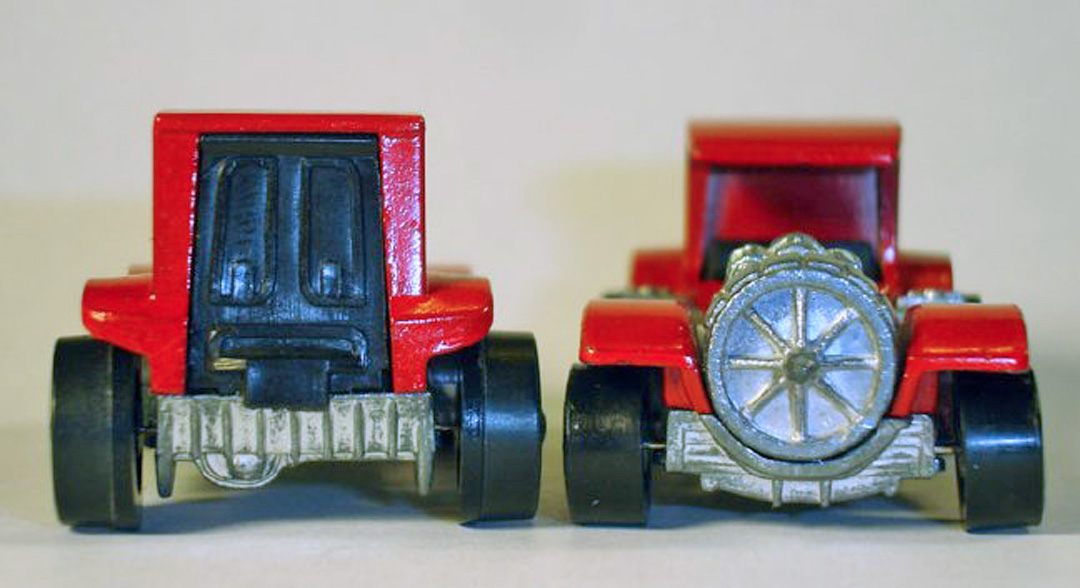
Front and rear details of the Superfine Turbine.
The Hong Kong-assembled Superfine Turbine came in six different enamel colors. The Mexican CIPSA-assembled car has been found only in the yellow-orange and green enamels.
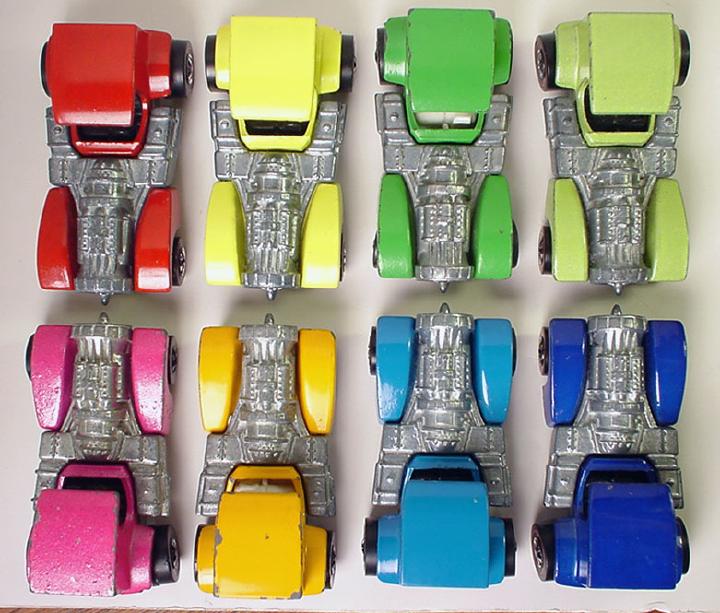
Seven colors have been found in the blister pack. Any color Superfine Turbine in blister pack is quite rare.
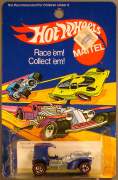 |
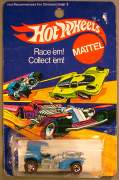 |
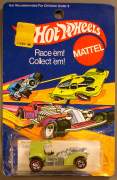 |
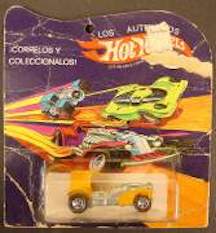 |
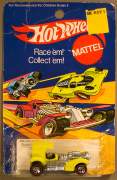 |
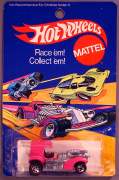 |
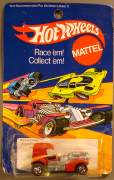 |
|
|
|
|
|
|
|
|
(Click any of the above photos to see a larger image.)
All Hong Kong-made Superfine Turbines have black interiors. All CIPSA Superfine Turbines found to date have white interiors.
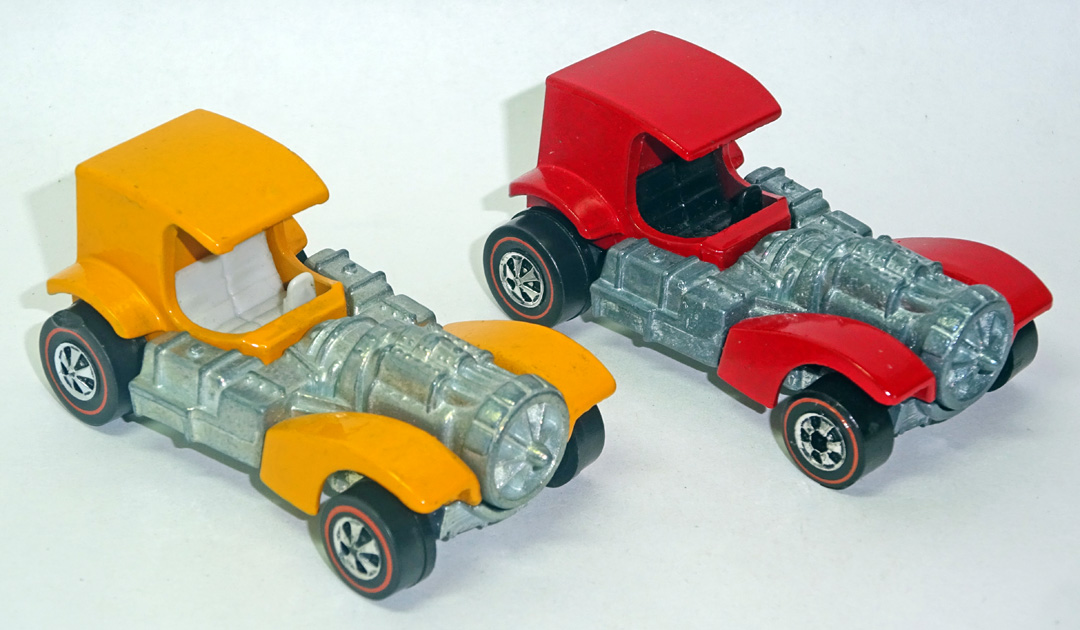
CIPSA (L) and HK-made (R) Superfine Turbines.
All Hong Kong-made Superfine Turbines were assembled with capped wheels in the rear and open-hub wheels in front. All CIPSA Superfine Turbines have capped wheels in the front and rear.
There are no known casting variations among Superfine Turbines, which is likely a consequence of the brief span of production. All production bases are labeled with Hong Kong as the country of origin.
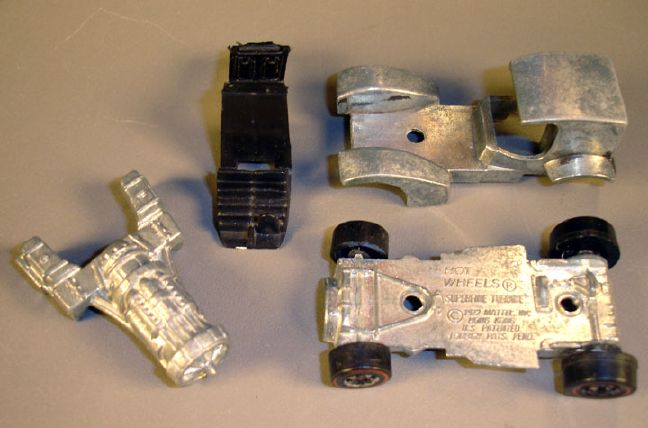
A disassembled production Superfine Turbine.
The Superfine Turbine is unique in that a number of items associated the manufacturing process have survived, including a contractor's specification sheet blueprint, the original pantograph pattern piece and four 1/64th scale protoypes. Two of the preproduction cars are zamac cast with blank bases and two have zamac bodies with plastic bases.
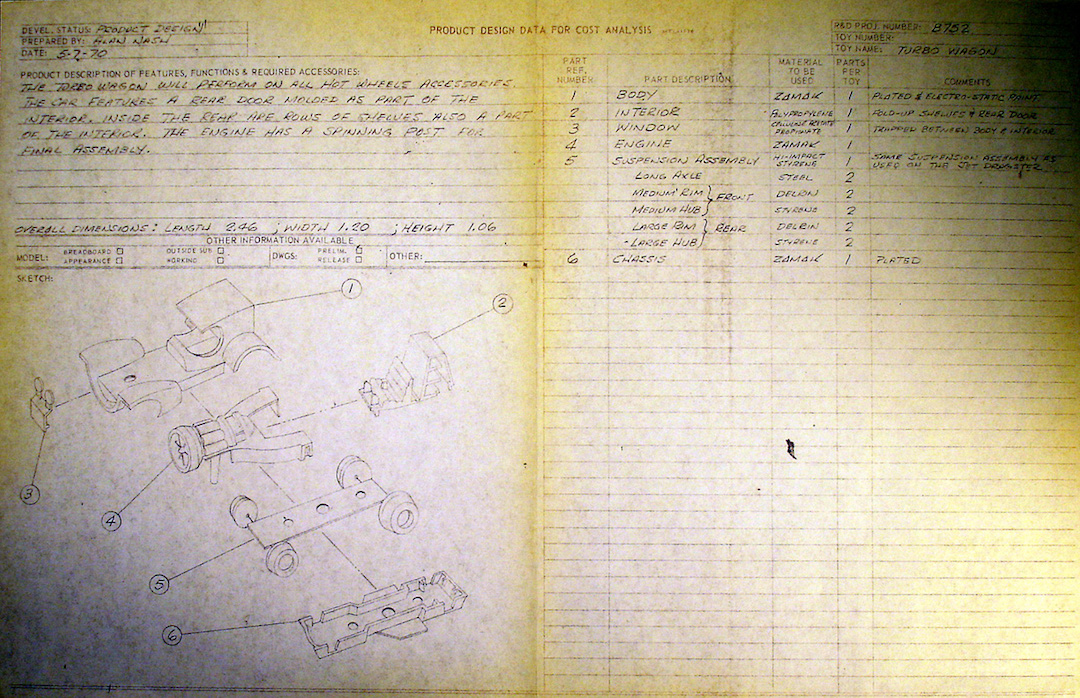
Contractor's blueprint.
The blueprint is dated May 2, 1970, however, the car was not issued until 1973. Note that the name was originally "Turbo Wagon". The drawings shows that a dual circular pane windshield was planned, which never made it to production. The wheel design shown is characteristic of the 1971 product line.

The assembled wooden pattern piece for the Superfine Turbine.
The wooden pattern piece is the original manufacturing pattern which was used to create the casting mold (tool) for the car. It is four times the size of the finished toy.
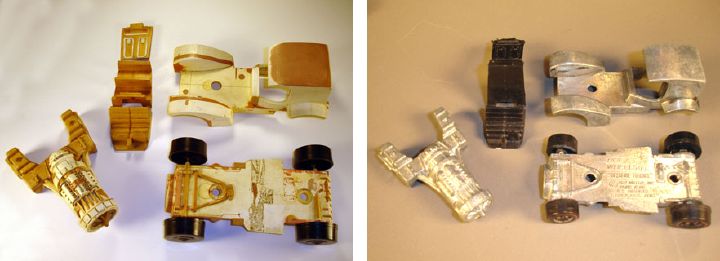
The Superfine Turbine pattern piece (L, unassembled) and the 1/64 casting (R).
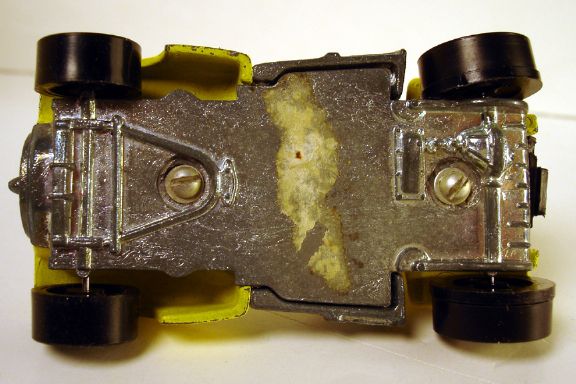
Prototype blank base assembled with screws.
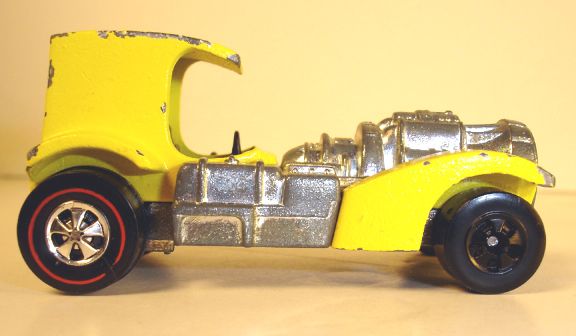
Side view of a yellow prototype Superfine Turbine.
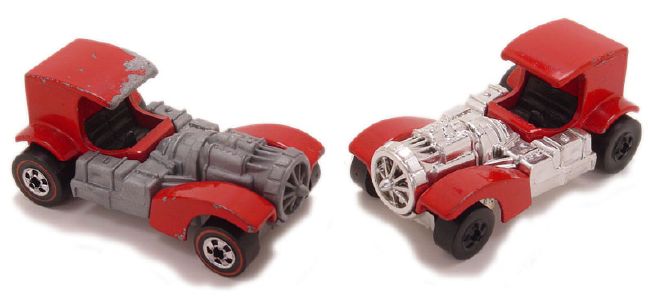
A pair of prototype Superfine Turbines with plastic engines and bases. (Courtesy of Roy Nakamura)
Color Chart
| HK COLORS: |
Relative frequency: |
COMMENTS: |
| Light blue | 25% | Most common |
| Dark blue | 25% | Common |
| Red | 25% | Common |
| Fluorescent lime green | 20% | Often thin spray |
| Yellow | 5% | Some shading variations |
| Pink | <1% | Rare in good condition; about 6 decent loose and 2 BPs are known |
| CIPSA yellow-orange | <1% | Only 3 known to exist, one BP |
| CIPSA green |
<1% |
Only 1 known to exist |
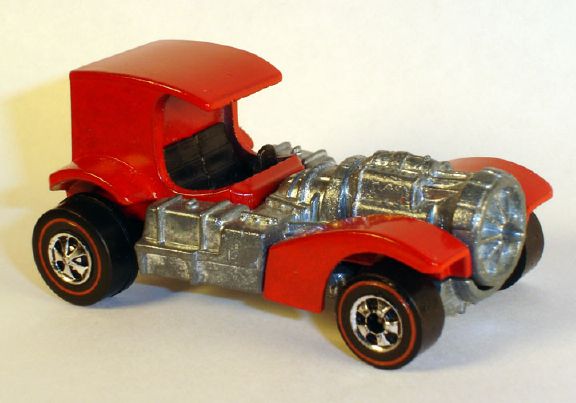
A beautiful red Superfine Turbine.
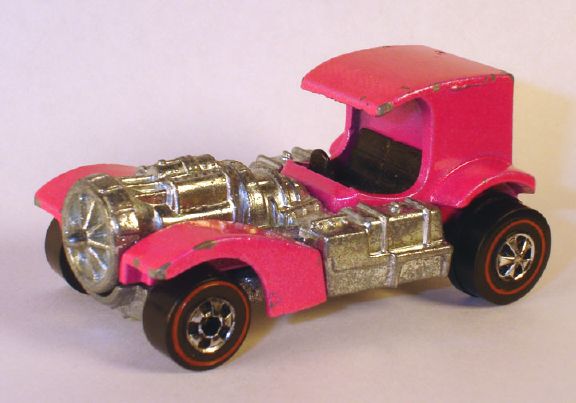
A rare fluorescent pink Superfine Turbine.
back to
On-line Redline Guide

Private use of original images is allowed. Non-profit, non-commercial publication of original images is allowed only with prior expressed written consent from Graymatters. For other commercial, for-profit or redistribution needs, please contact the site owner. This site is not affiliated with Mattel, Inc.
© 2007 by Graymatters. All Rights Reserved.